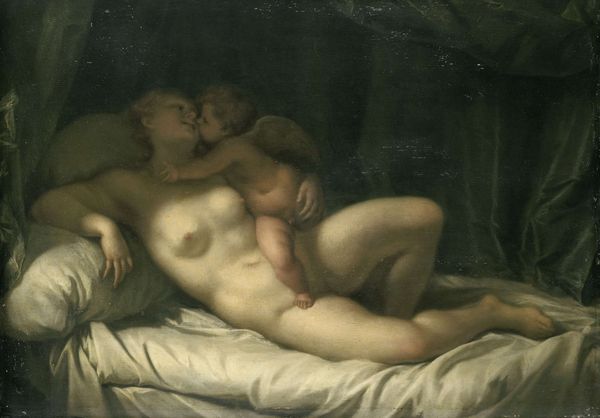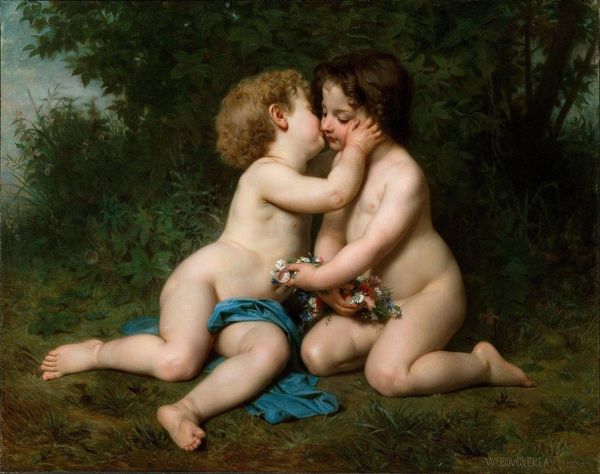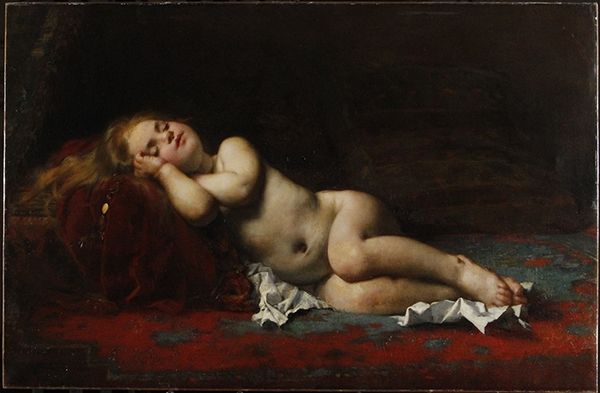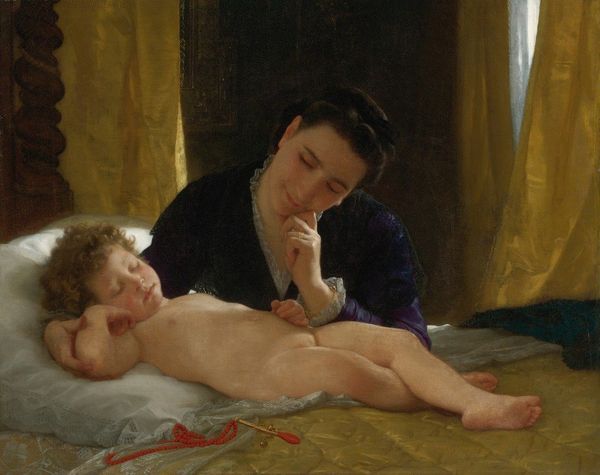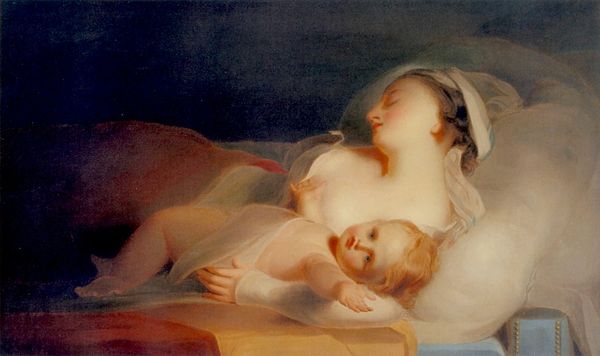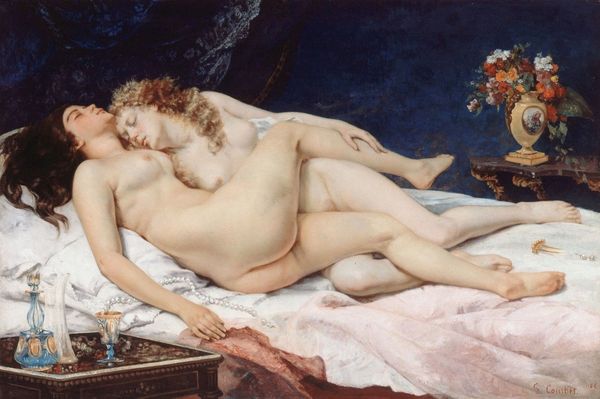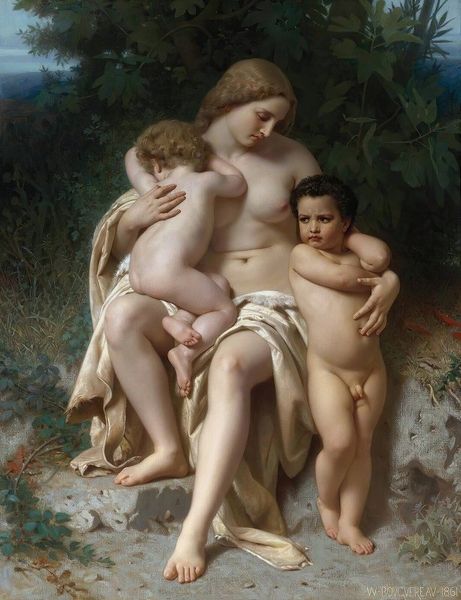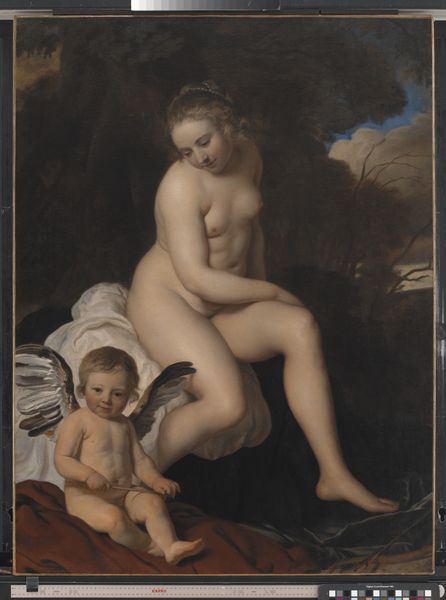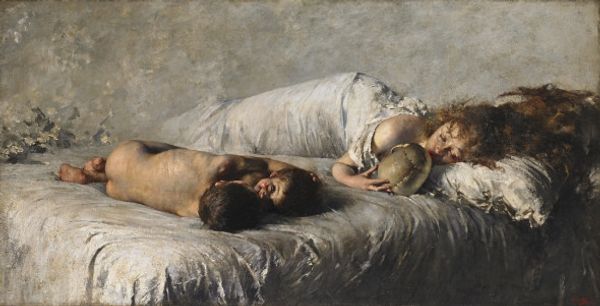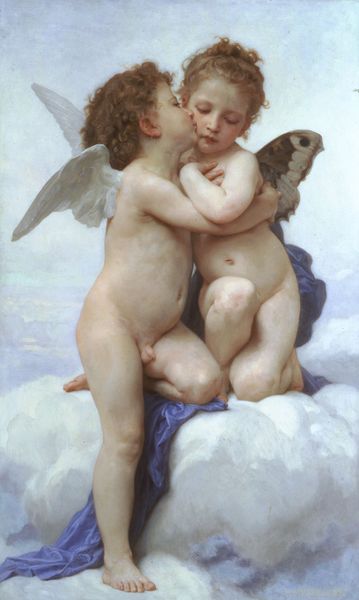
Copyright: Public Domain: Artvee
Editor: This is "Les enfants endormis," or "The Sleeping Children," by William Bouguereau, painted in 1868. It’s an oil painting of two young children asleep in bed. I'm struck by how vulnerable and intimate it feels. What do you see in this piece? Curator: I see a highly idealized representation of childhood innocence, certainly. But through a contemporary lens, we need to critically examine how it also functions within a specific patriarchal gaze. Bouguereau, while celebrated in his time, promoted a specific vision of femininity and childhood, often tied to notions of purity and domesticity, what do you think? Editor: That makes sense, I hadn't thought about that angle. The children almost seem to be posed, even in their sleep. It feels less candid and more… constructed? Curator: Exactly. We have to consider the power dynamics at play here. Who gets to represent whom, and for what purposes? In the context of 19th-century France, how might this image reinforce societal expectations about childhood, gender roles, and even class distinctions? Does the painting inadvertently normalize a particular form of looking at bodies, especially children's bodies? Editor: That's really making me rethink my initial reaction. It’s unsettling to think of it that way, but also crucial. Curator: These images are never neutral. By understanding their historical context, we can begin to unpack the subtle ways they shape our perceptions. What are your feelings now? Editor: I now see that this seemingly sweet scene has deeper, potentially problematic layers regarding the portrayal and perception of children. It's definitely given me a lot to consider. Curator: Indeed. Art can teach us much about the cultural mores from where it originates.
Comments
No comments
Be the first to comment and join the conversation on the ultimate creative platform.
